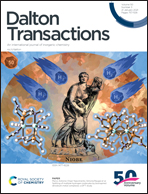A flexible and portable all-fiber temperature sensor based on the upconversion luminescence of octahedral NaBi(WO4)2:Er3+/Yb3+ phosphors†
Abstract
Octahedral NaBi(WO4)2:Er3+/Yb3+ phosphors were synthesized by a hydrothermal method. Intense green upconversion emissions from both 2H11/2 → 4I15/2 and 4S3/2 → 4I15/2 transitions of Er3+ ions were observed and the appropriate energy gap between them is very suitable for temperature sensing requirement based on the fluorescence intensity ratio (FIR) technique. A flexible and portable all-fiber temperature sensing device was established and used to assess the temperature sensing characteristics of NaBi(WO4)2:Er3+Yb3+ phosphors. A maximum absolute sensitivity of 0.014 K−1 is achieved at 423 K and the temperature absolute error is −0.5 K to +0.6 K. The stepwise heating and cooling processes confirm the good stability and recyclability of the all-fiber temperature sensor, which lays the foundation for actual temperature measurement. Based on the high flexibility and accuracy of the temperature sensor, the monitoring of body temperature was realized in real time and continuously, which may provide new development prospects for effective health tracking and improvement of medical care quality.



 Please wait while we load your content...
Please wait while we load your content...